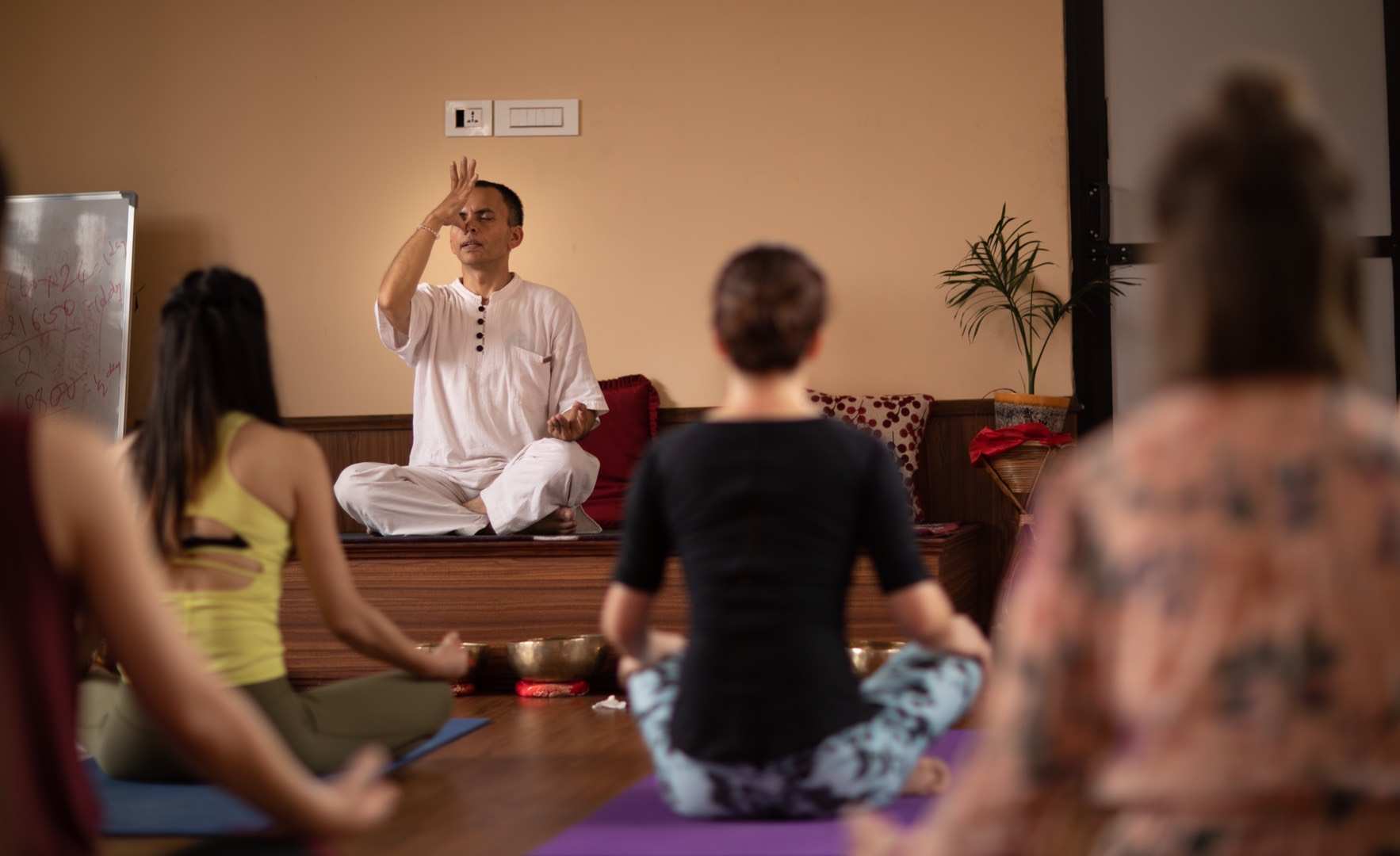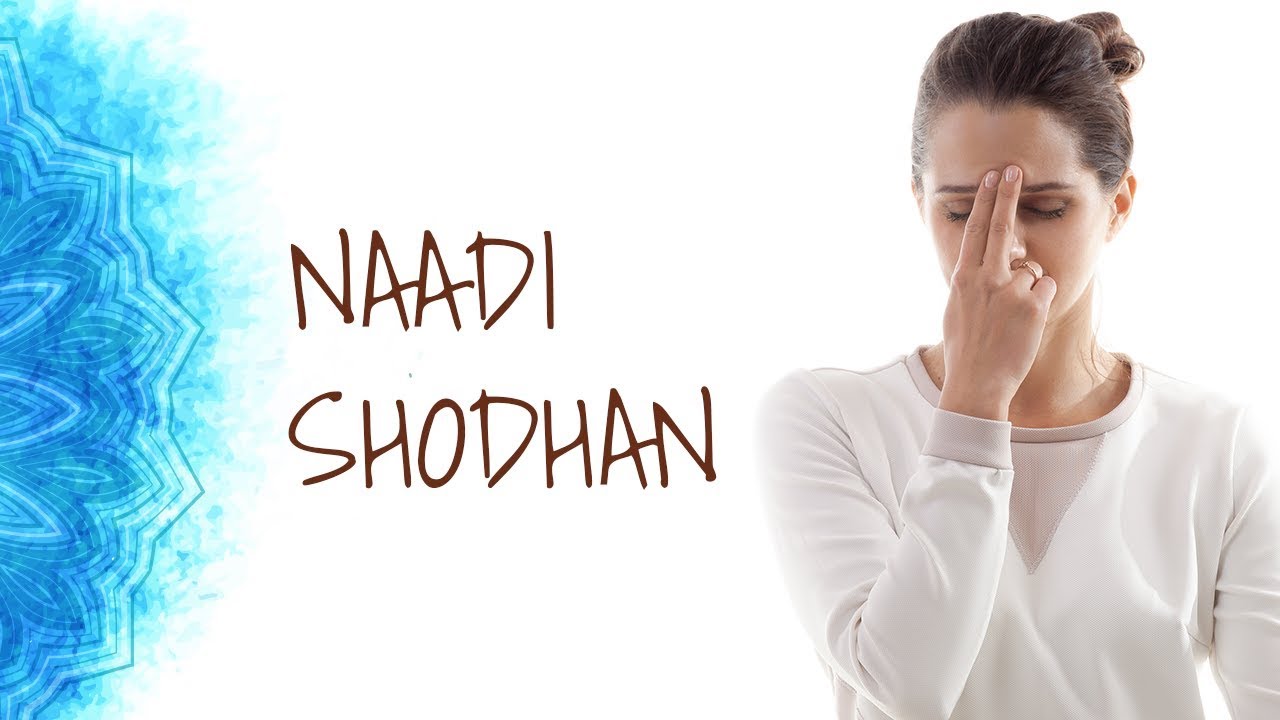SCIENCE OF ONE NOSTRIL BREATHING AND PRANAYAMA
2 Sep 2020 HYN Himalayan Yoga Academy

SCIENCE OF ONE NOSTRIL BREATHING AND PRANAYAMA
“PRANAYAMA PARAMA TAPAH”
Breathing & Respiration:
Breathing involves the movement of air in and out of the lungs through nostrils. The activity of inhalation and exhalation is breathing. Breathing is a part of respiration. For the most part, control of the breath is automatic and involuntary. With each inhale we bring oxygen into the body and spark the transformation of nutrients into fuel. Each exhale purges the body of carbon dioxide, a toxic waste.
Respiration involves a gas exchange between the lungs and the blood. The deriving energy from food molecules with the help of oxygen is call respiration.
Mechanism of Breathing/Respiration: As the chest muscles contract on inspiration, the diaphragm moves down, the ribs expand and oxygen moves into the lungs. On expiration, the diaphragm and chest muscles relax and carbon dioxide moves out of the body, into the atmosphere. This is called Respiration Mechanism.There are aspects of breathing that we control in a voluntary and conscious manner via the cortex of the brain.
ONE NOSTRIL STUFFY AT A TIME/NASAL CYCLE
Nostrils have the specialized erectile cells/ tissues. At a given time, these cells are swollen in one nostril while they are shrunk in the other. Hence, when we breathe air passes easily through the nostril in which the tissues are shrunk. Throughout the day, they each take breaks in a process of alternating congestion and decongestion called the nasal cycle. This cycle is first discovered by the German nasal specialist Richard in 1895 A.D.
However, because of this swelling very less amount of air slowly passes through the other nostril. Thus it seems as it, we breathing through one nostril only. Around 85% proper breathing enters through one nostril at a time. After few hours, the swelling and shrinking in the nostril reverse. This breathing pattern is called Nasal Cycle. It is original and natural Pranayam. Generally nasal cycle is beneficial for human being because some odors are detected better in fast moving air, while others in slow moving air. Then the fast moving odors in one nostril and slow one in the other. One nose can detect a greater range of smells. Besides this, our nostrils are moist. Continues breathing can make them dry. Thus, when we breathe through one nostril, the other nostril gets time to become moist again.
Every few hours, your autonomic nervous system, which takes care of your heart rate, digestion and other things what we don’t consciously control, switches things up and your other nostril does all the heavy lifting for a little while. The opening and closing of the two passages is done by swelling and deflating erectile tissue.
One more interesting part of breath is that which nostril is more working that makes different effects on the body and mind. One of the studies in 1998, the breathing through the right nostril particularly raises the glucose levels in the blood and also another study in 1993, the significance of right nostril breathing increases more oxygen than the left one.
Another study in 1994, the breathing through left nostril that influences the right hemisphere of the brain and have vice-versa through right nostril. When we turn laterally one side and stay 12 to 16 minutes one side is swollen and increase the breath another opposites. This is very huge science as Swara Yoga Faculty.
THE SCIENCE OF BREATHING
Autonomic Nervous System and Breathing: The autonomic nervous system (ANS) consists of the sympathetic nervous and the parasympathetic nervous system (PNS) – also known as fight and flight system, which returns us to a relaxed resting state. The PNS is under the control of the vagus nerve. Nerve fibers from the central nervous system (CNS) go to the organs in the thorax, throat area, the heart and in the abdomen; and fibers from the organs go back into the central nervous system to convey what is going on internally. Nerve fibers send branches into the limbic system of the brain that inhibit the stress responses.
Phase of Swasa, Swasa Vyayama, Swasa Kriya, Pranayama and Uchcha Pranayama:
- Swasa (Breath) – it is observed, felt during regular swass process. It will be different forms and stages in Dhyana (Meditation) as well.
- Swasa Vyayama (Breathing Exercise) – It is done and happened with/ throughout the Physical activities.
- Swasa Kriya (Breathing Act) – It is done and smoothly acted by effort with awareness, but no physical exercise.
- Pranayama ( Breath Control) – It is called Kumbhaka or it is practiced with kumbhaka throughout all four phases Puraka, Antara Kumbhaka, Rechaka & Bahira Kumbhaka
- Uchcha Pranayama (Advanced Breath Control) – Kumbhaka is practiced with Bandhas/ Lock.
Deergha Swasa Kriya or Pranayama:
Deergha Swasa Kriya / Pranayama also called Three-Part Breath, is a practice of slowing and deepening the breath. Deerga is an essential yogic breathing technique that is taught in most yoga classes along with postures. To practice this technique, slow down the breath and focus on the exhale—especially effective for increasing the relaxation benefits of the practice. There is a small amount of research suggesting that slow yogic breathing can have an important impact on vagal tone, a physiological marker of resilience and stress reduction.
Few studies have found at how this breathing technique might lower blood pressure and improve vagal tone in those with hypertension. In these studies suggest that Deergha can be a helpful tool for those with hypertension, and may also improve physiological markers of stress more generally.

Nadi Shodhana Kriya or Pranayama:
Nadi Shodhana Kriya or Pranayama (Alternate-Nostril Breath), is touted for its ability to reduce stress and still the mind. This practice consists of sitting quietly and breathing into each nostril separately by plugging one nostril and breathing in the opposite nostril. The instruction is to practice going back and forth between each nostril slowly and rhythmically. The practitioner plugs the left nostril, breathes in through the right; plugs the right nostril, exhales through the left. Then he or she repeats this on the other side: Plug the right nostril; breathe in through the left, and onward.
Interestingly, as many yogis have noticed in their own practice, breathing through one nostril compared to the other produces different effects on the body. For example, a study found that breathing exclusively in and out of the left nostril decreases blood pressure, whereas breathing exclusively through the right nostril increases blood pressure. This aligns with the yogic view that breathing into the left nostril activates the ida (Lunar Path), the energy channel associated with rest and relaxation and Lunar breath influences right hemisphere of brain. The breathing into the right nostril activates the pingala (Solar Path), the energy channel associated with activity and action and influences the left hemisphere of brain. Nadi Shodhana helps balance the nervous system, evening out differences in sympathetic and parasympathetic tone and it also reduces blood pressure, promoting a greater sense of calm and relaxation. Usually there are four phases of Nadisodhana i.e I and II are Nadishodhana Kriya; and III and IV are Nadishodhana Pranayama.
Pranayama (Yogic breath Control) involves the voluntary control of the breath, and is practiced widely in yogasana and meditation, but is something that anyone can do. Slow Pranayama appears to shift the autonomic nervous system from the fight or flight sympathetic to the calming parasympathetic state and has been shown to positively affect immune function, hypertension, asthma, and stress-induced psychological disorders.
Historically, pranayama techniques were aimed to expand the life-force energy, increase the life span and help people access more subtle experiences—nadis, chakras increased sensitivity to the world. These outcomes are difficult to measure using our current scientific models and techniques; there may be maximum advantages that our current research cannot capture. However, scientists have begun to collect data on the more observable physical and mental benefits of various Swasa and pranayama techniques. While the research is preliminary, their findings may encourage you to get on your physical and breath work.
Bhastrika Kriya or Pranayama:
The Bellows breath, or Bhastrika, is also meant to increase energy flow. Bhastrika is practiced by breathing fully and forcefully in and out of the nose. It is dine in three stages Manda (slow), Madhyama (Medium) and Drutta (Fast). Some researches in Colleges were curious to see how Bhastrika would impact the nervous system. The participants were instructed to practice a slow-paced bhastrika: inhaling to maximum for a count of four, then exhaling to maximum to a count of six. At this pace, participants were breathing at a rate of six breaths per minute and they were asked to continue with this practice for five minutes.
Researchers found that Bhastrika produced a significant decrease in blood pressure and a slight decrease in heart rate. The researchers concluded that “slow-pace Bhastrika Pranayama (respiratory rate 6/min) exercise shows a strong tendency of improving or balancing the autonomic nervous system through enhanced activation of the parasympathetic nervous system, and thus can be practiced for mental relaxation and reduction of stress in daily life.” Bhastrika can also increase heat energy, release tension in the abdomen, activates all the organs in Abdominal and pelvic cavity, control the fat accumulation, helps loosen congestion and decongest the lymph and purifies the blood.
Medical Merits of Pranayama:
There are several studies that show the therapeutic merits of Pranayama. One study showed improvement in pulmonary function tests in patients with asthma and emphysema after practicing yogasana and Pranayama for 40 min a day over the course of two months. Several studies have supported Bhastrika Pranayama in enhancing “parasympathetic tone.” The study showed the benefits of Alternate Nostril (Anuloma-Viloma Kriya) OR, Nadi shodhan Kriya or Pranayama in increasing parasympathetic tone by measuring heart rate variability and expiration-inhalation ratios. A pilot study with chemotherapy patients showed improvement in mood and sleep after Pranayama, and numerous other studies support the benefits of Pranayama in Insomnia, depression and anxiety.
Conclusion:
Pranayama is loosely translated as prana or breath control. The ancient yogis developed many breathing techniques to maximize the benefits of prana. Pranayama is used in yoga as a separate practice to help clear and cleanse the body and mind. Pranayama also affects our state of mind. In the yogic tradition, air is the primary source of prana or life force, a psycho-physio-spiritual force that permeates the universe. It is also used in asana, the practice of postures, to help maximize the benefits of the practice, and focus the mind and in preparation for meditation.
OM SHANTIH! SHANTIH! SHANTIH!
